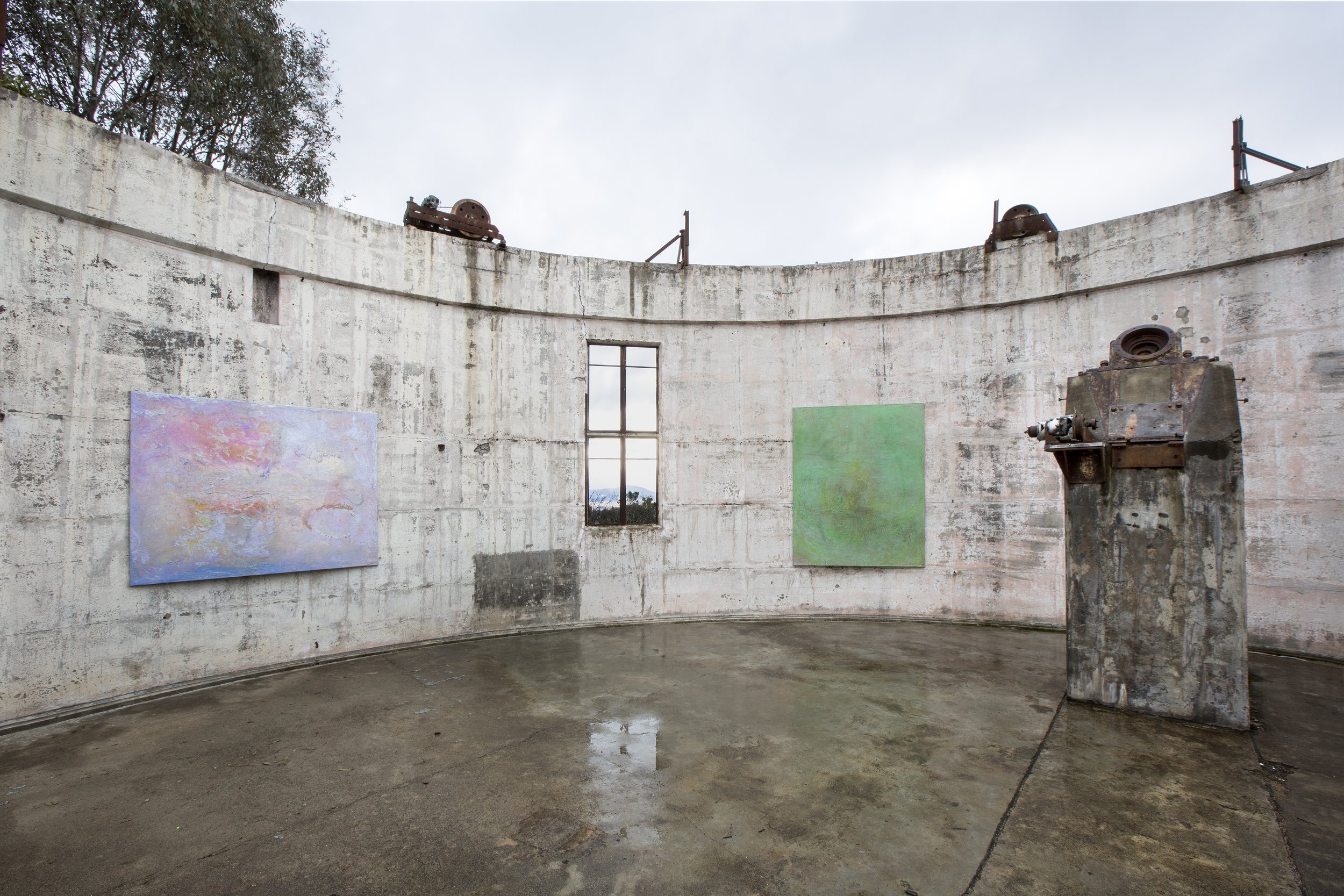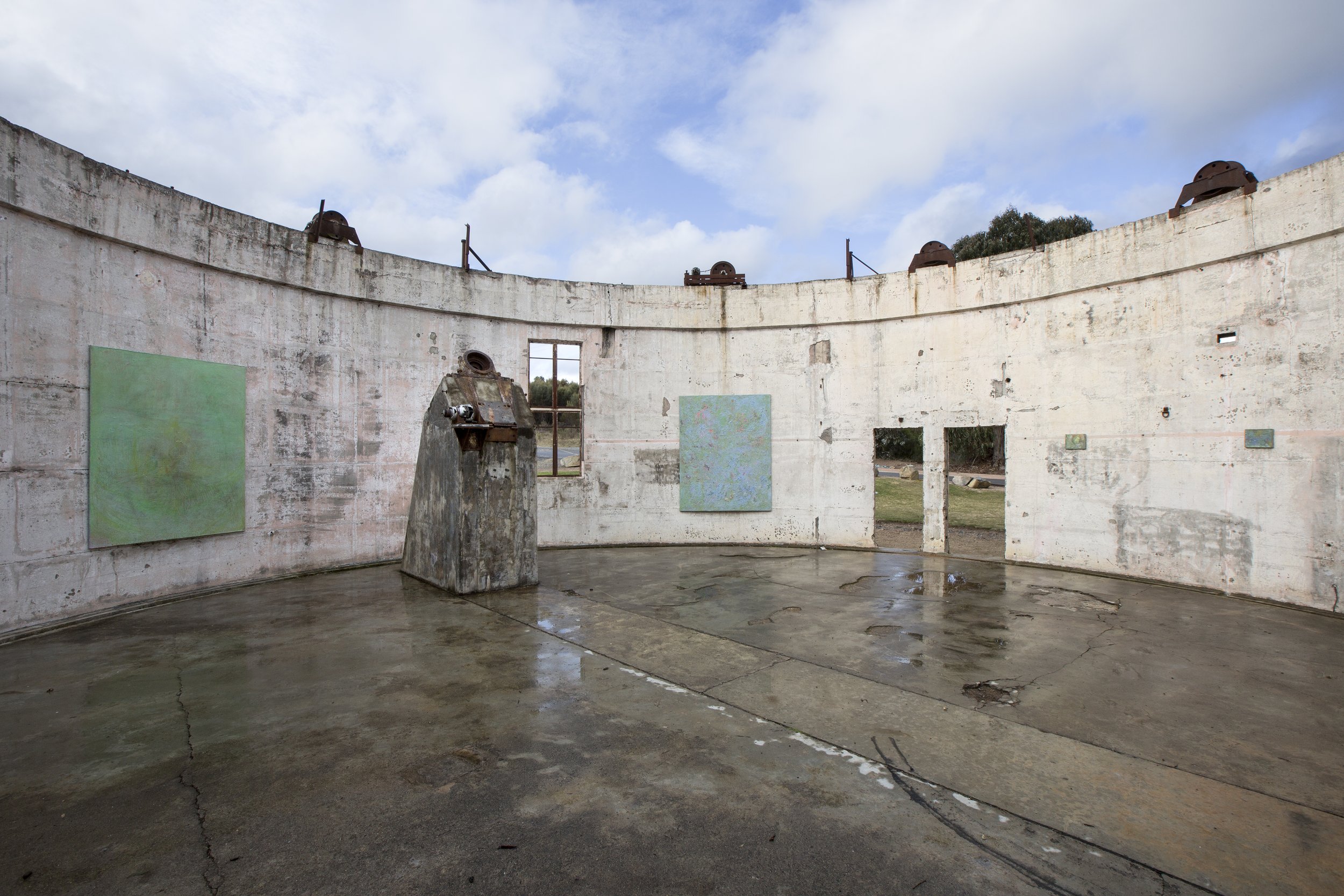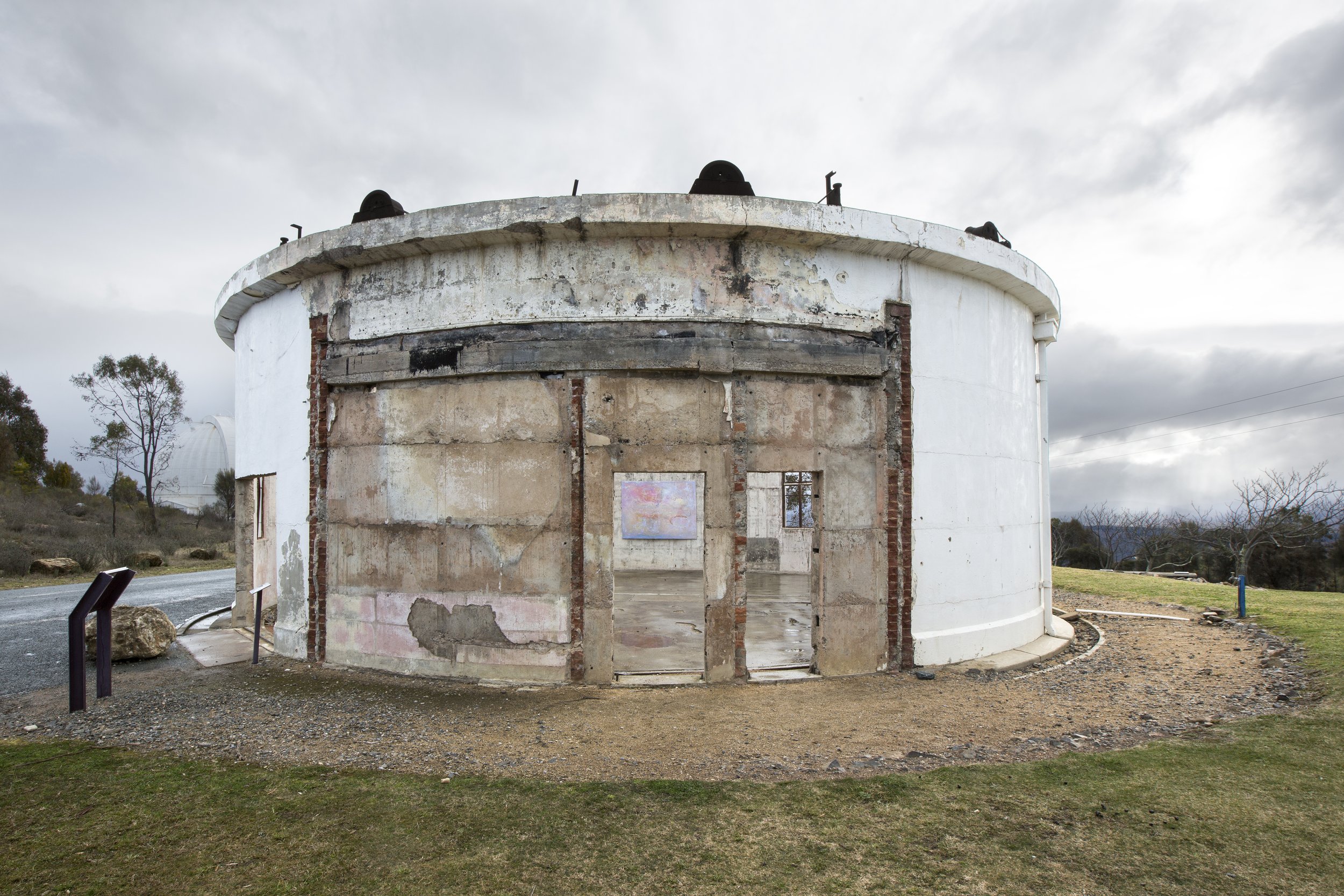This is the place: Luke Brennan’s ‘Pangs’ at Al Fresco
/There is something magical about being inside the ruins of the Yale-Columbia Refractor. The late winter sun seems to shine a little more subtly, illuminating the peeling wall paint across the heavy crumbling concrete structure. It feels mere years short of dystopian.
‘I was on Mount Stromlo for work a few years back and I ended up here,’ Director of Al Fresco, Oscar Capezio, remembers. ‘I saw this space, and I thought: “This is the place.” ’
And those words – this is the place – capture the premise of Al Fresco, as an experimental outdoor fine arts project. Capezio has a talent for placemaking, and Al Fresco is no different: ‘Without boundaries, beyond financial imperatives, open and exposed to the elements’, it forces audiences to interact with art in a completely fresh way.
Al Fresco’s inaugural exhibition, ‘Pangs’, is a solo presentation by Warrang/Sydney-based painter Luke Brennan. Brennan’s work draws on the organic and the biomorphic, using materials such as soft wax with acrylic paint to disrupt the preconceptions of art historical authority. Capezio describes the word ‘pang’ as: ‘Anxiety arriving at speed – sharply felt but unexpected.’ Brennan’s exhibition can be understood as a manifesto of degradation; of place, mind and body.
First, there is the degradation of place: striking and quintessential. It is within the deteriorating concrete walls of the Yale-Columbia Refractor that Al Fresco takes place. In 2003, the 26-inch refracting telescope fell victim to Kamberri/Canberra’s vicious bushfires, with the battered shell of the dome providing a stark reminder of the catastrophe. The setting’s sense of dark spectacle allows for the erosive and corporeal nature of Brennan’s work to be realised in its truest form.
The pangs that drive Brennan’s practice also signify a degradation of the mind. Brennan is relieved that his works are out of his studio and on display. The four large canvases included in ‘Pangs’ are the largest works the artist has produced, and according to the exhibition text, have haunted him for the past 12 months like an affliction.
The accumulated surfaces of Brennan’s paintings evoke those of a decaying body. Organic forms reminiscent of tumours and scars protrude from the surface of the canvas, periodically stretched and unstretched by Brennan. This process causes his thickly applied layers of wax and paint to bend, flake and crack. Repeated cycles of creation and reduction obliterate any trace of the artist, and all evidence of process, and yet they produce an intimate stripped-down exposé of the artist’s psyche.
Brennan’s work is poetic in a way that it shouldn’t be. The artist challenges taught systems of artmaking, yet the final result is something so complex and violent that it also seems somehow mechanical and calculated.
Brennan has created this body of work specifically for his exhibition at Al Fresco; the canvases both stand out and fit in with their dilapidated environment. Every piece of the puzzle fits seamlessly into a narrative of disrupting institutional authority. Gone are the hierarchies that position audiences to stare blankly at coloured surfaces confined to a white cube. Al Fresco is a space in which audience, artwork, artist and exhibition are experienced simultaneously.
This – in all its naked, painfully beautiful yet abject glory – is the place.
Zeta Xu, Kamberri/Canberra
Curated by Oscar Capezio, ‘Pangs’ was exhibited as part of Al Fresco’s inaugural winter program for two weekends in August 2022. Al Fresco’s forthcoming spring 2022 exhibition presents a collection of artworks that look towards the heavens, to consider what is ‘out-there’.






















